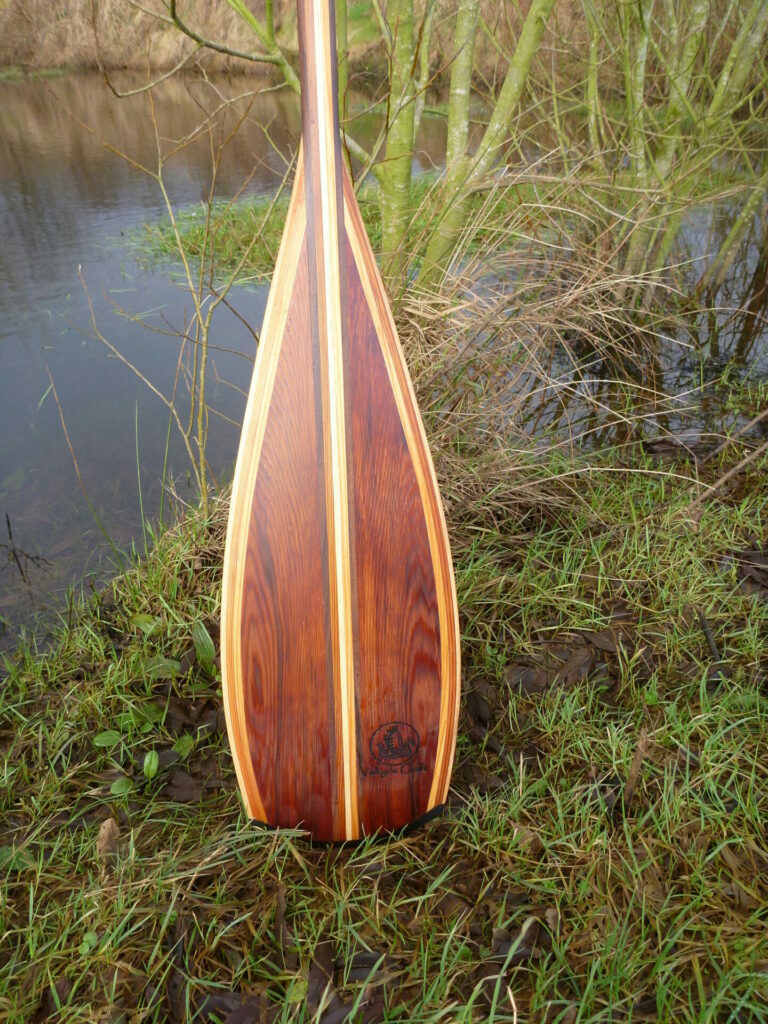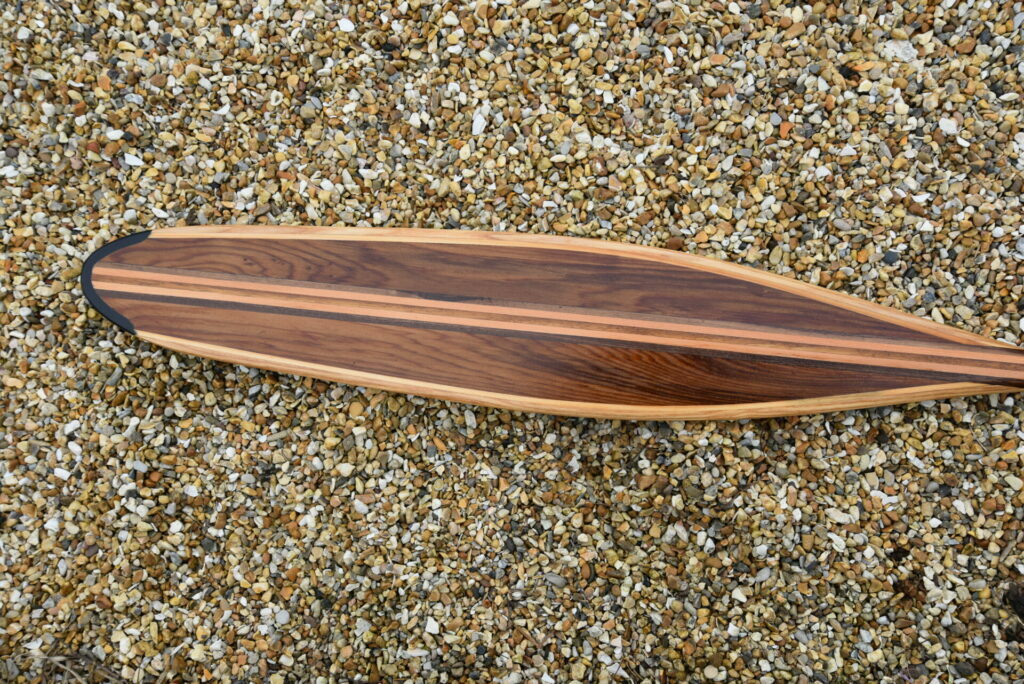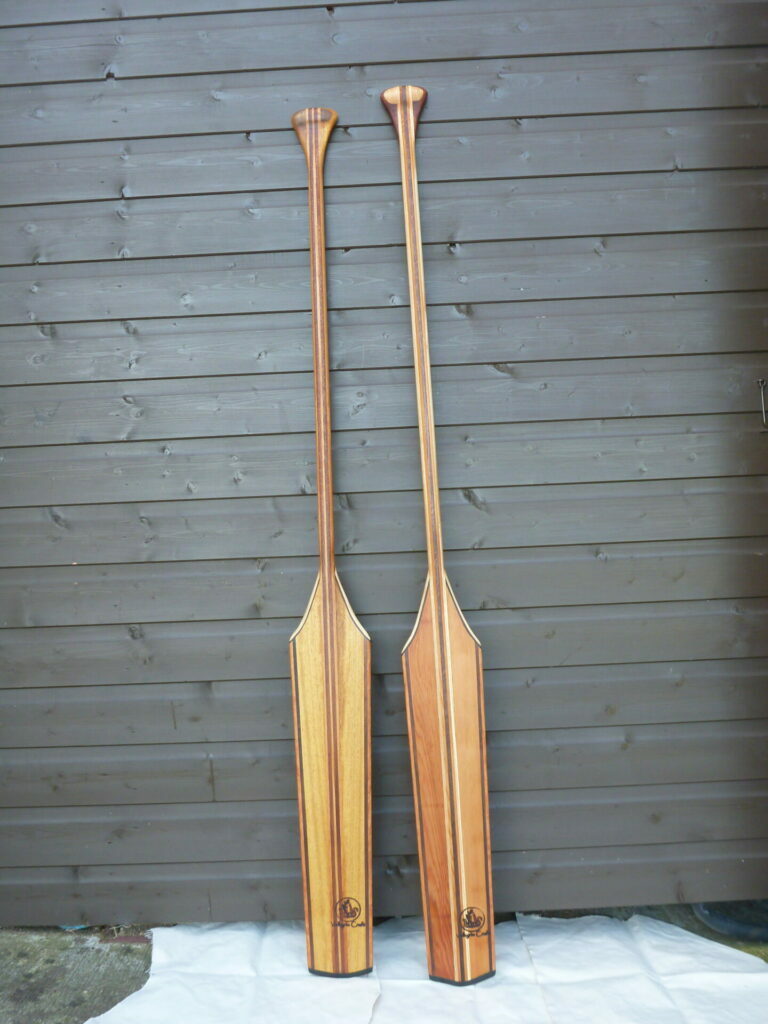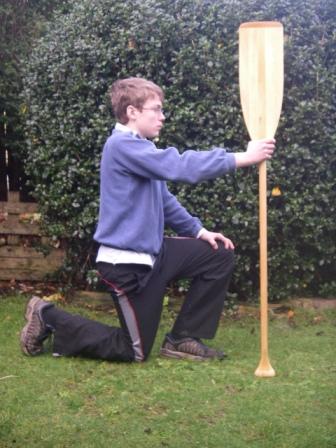Canadian / Single Blade Paddles
Huscarl
Named after the Norse household warriors, this paddle is designed for everyday general purpose paddling. It is a beautiful all round paddle to use with the full range of strokes. The blade size is generous giving it the potential for bursts of power when needed. The shape is based on a modified beavertail.
Blade Length: 58 cm/23 in
Blade Width (widest): 20 cm/8 in

Viking
Viking means to go out travelling; the Norse sagas talk of men going ‘a viking’ and that is the niche of this paddle. Its long curved blade gives great purchase on the water providing excellent control in open water, where wind can be an issue. The ability to vary the depth of the stroke gives control over the level of work required and, like all touring blades, the blade length dictates the need for a slower and more relaxed stroke rhythm. The shape is based on a modified ottertail.
Blade Length: 74 cm/29 in
Blade Width (widest): 15 cm/6 in

Thane
Named after the minor Norse Lords, the Thane is a beautiful paddle for touring. Like the Viking its shape is perfect for deep water paddling where the blade length provides excellent grip in the water and allows for a long slow blade rhythm to develop. With a slightly larger blade surface area than the Viking, the Thane has the potential for slightly more power to be generated with each stroke. This paddle is based on a long bladed Voyageur.
Blade Length: 71 cm/28 in
Blade Width (widest): 12.5 cm/5 in

The Perfect Paddle?
Optimum paddle shape and length depends on purpose. For most paddlers, choice of paddle is a compromise between the various uses we put them to, though it is common to have more than one type. For example, a long bladed touring paddle is excellent for deep water, and a shorter one for shallow. Whitewater paddlers often have a wooden paddle for flat water sections and a strong nylon-headed paddle for rapids and shallow water. If you are limited to one paddle, many paddlers would recommend the classic beavertail; our version is called the Huscarl.
Single Blade Paddle length
A simple guide to personal paddle length is to kneel down and hold your arm out so it is parallel to the ground. The distance from the bottom of your fist to the ground is the paddle shaft length you need. The image to the left shows this method – the position mimics the power stage of the stroke, with the top hand extended level, holding the grip, which puts the blade below the level of the ground (i.e. underwater).

Note#. Using the method where you stand and choose a paddle that comes to the level of your shoulder is not useful as it entirely ignores the length of the blade!

To illustrate the need to consider the paddle type when choosing the size of paddle: the shaft lengths for my own Viking and Huscarl paddles are 90cm. The long blade of the Viking means the paddle’s overall length is 164cm. The shorter Huscarl head makes its overall length 150cm. If my own Viking was 150cm long I’d be working with a very short shaft of 75 cm which would neutralise the benefit of the long blade. Your paddle length should vary with the blade length/type. Hope this makes sense!
Head size and blade shape
Simply put, a shorter, broader paddle head can provide more instant power per stroke, but is more tiring to use. A smaller-headed paddle can’t generate the same amount of power per stroke but doesn’t wear you out so fast. Racing a canoe over a shorter distance, and whitewater paddling, both benefit from short, broad, paddle heads, whilst touring or longer trips are more comfortable with longer, narrower blades.




